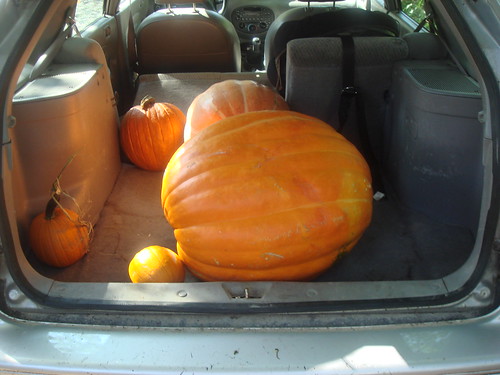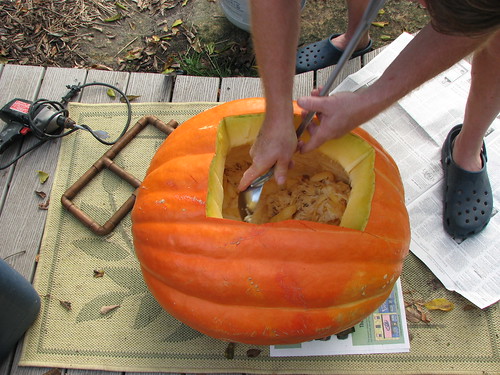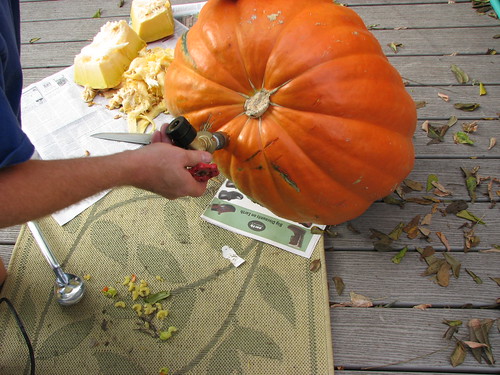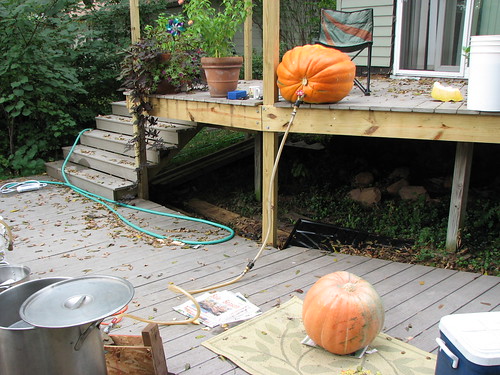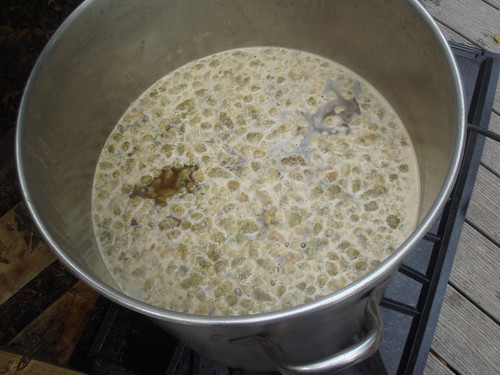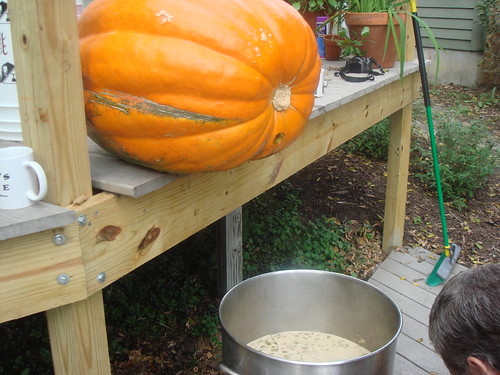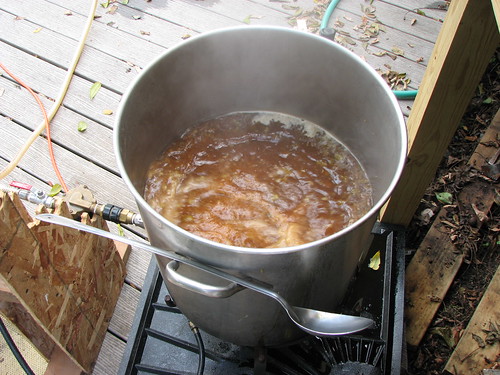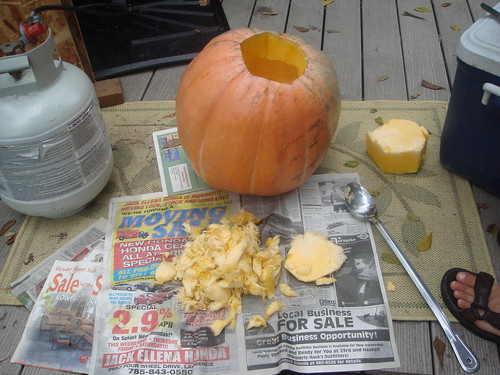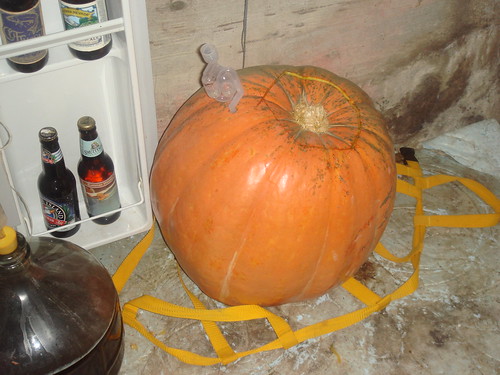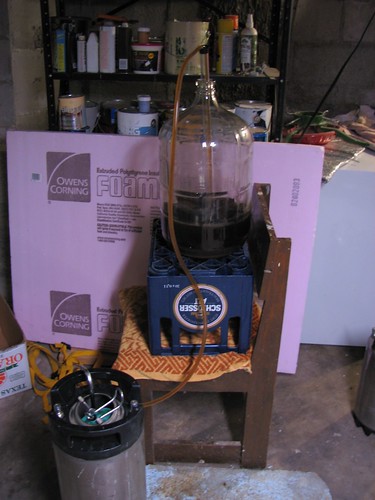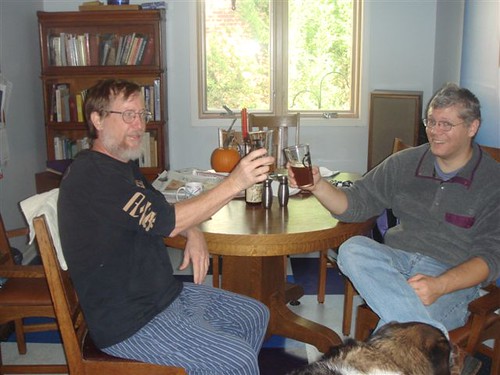I (heart) ON! | Canucklehead.ca | Canucklehead
INTERESTING THINGS FOR YOU AT NIGHT PART 2 + 3 (ULTIMATE EXPANSION)
Japan Video Games Blog
TO THOSE WHO DON'T WANT THEIR WORK PROMOTED
We're not making money off the site, nor are we publishing anything to other places through feedburner claiming that it's our work, just a hobby of finding cool things around the internet, that's all. Sometimes we copy and paste too quickly and a link giving you credit doesn't appear, if that's the case and you DO want your work promoted, we will add in the backlink, we would love to give credit where credit is due!
Please contact me or drop a comment on any posts you guys don't want up and I'll take it off within 24 hours, thanks!
Sunday, March 1, 2009
10 Big Lessons from Little Kids
“You can learn many things from children. How much patience you have, for instance.”10 Big Lessons from Little Kids
- Franklin P. Jones
Have you ever watched a child completely engrossed in a project? They have the unusual ability to be serious about what they’re doing without taking it too seriously. You can do the same with your life. You can live every day with more focus, and every week with more motivation.
Here’s what every child knows that you may have forgotten. See if you can apply some of these lessons to your adult life.
1. Breakfast is the most important meal of the day. Even when there’s not a prize in the bottom of the box.
Studies show that children who eat breakfast do better in school. It doesn’t take much further thought to know that adults will feel better and perform better at work as well. Researchers believe that eating first thing in the morning may help to stabilize blood sugar levels, which regulate appetite and energy. They suggest people who eat breakfast are less likely to be hungry during the rest of the day and are, therefore, less likely to overeat. So, tomorrow morning, remember that eating a healthy breakfast is the best way to start off your day, and be good to yourself by eating a healthy one.
2. Homework blows. Bring work home with you and it’ll ruin your night. And your marriage. And your family. And your life.
Don’t bring work home. If you are overloaded and don’t have enough time at work to do what is expected, talk to your supervisor to resolve the problem. Home should be your relaxation zone, not another workplace. Make sure you separate work and leisure time in your head – so that work doesn’t spill over into your fun. Even simple things like changing out of your work clothes and having a shower when you get home, or going to the gym after work can help you shake off the working day.
3. The only way to know how something works is to completely disassemble it. (This is still good advice when tackling a complex problem. Your plasma TV? Not so much).
Hard problem? Break it down! Writing a book seems daunting, so start by doing an essay. If an essay is too much, start by writing a paragraph summary. The important thing is to have something done right away. Once you have something, you can judge it more accurately and understand the problem better. It’s also much easier to improve something that already exists than to work at a blank page. If your paragraph goes well, then maybe it can grow into an essay and then into a book, little by little, a perfectly reasonable piece of writing all the way through.
4. There’s a reason they don’t give credit cards to 8-year-olds. You’re supposed to save up money before you buy a new toy.
Managing your money is an important life skill that few of us were ever taught. But it’s never too late to learn. Taking control of your money means knowing where it’s going. It’s all too easy to let your money fritter away without any real sense of what you’re spending. The key is to sit down and work it out. It’s a good idea to write down your spending, then you can review it and see where you could manage money better.
5. Asking questions is how you figure things out. Lots and lots of questions.
Why are taller buildings better? What is the purpose of curbs? Ask anything that comes to mind, and ponder the possible answers. Our brains are wired to be curious. As we grow up and “mature” many of us stifle or deny our natural curiosity. Let yourself be curious! Wonder to yourself about why things are happening. Ask someone in the know. The best way to exercise our curiosity is by asking “Why?” Make it a new habit to ask “why?” at least 10 times a day. Your brain will be happier and you will be amazed at how many opportunities and solutions will show up in your life and work.
6. The coolest adults were the ones who took the time to listen to you. You still want to grow up to be a cool adult, right?
When you’re feeling stressed, have had a particularly difficult day, or are facing a crisis, the ear of a supportive friend can be a lifeline to peace. A genuinely good listener is actually more rare than one would think, and also more valuable. Sometimes people feign listening, but they’re really just waiting for their friend to stop talking so they can say whatever they’ve been mentally rehearsing while they’ve been pretending to listen. People can usually sense this, and it doesn’t feel good. Learn how to be a truly supportive listener, and you may find yourself surrounded by others who are able to do the same.
7. Your body was designed for throwing baseballs, shooting hoops, and jumping off diving boards and stuff. In the secret language of children, the word “fitness” doesn’t exist. It’s called “having fun.”
Everything can be a game. Why slog through the same workout routines in boredom, when you can add a little fun? Make up rules, shoot for personal records, regain your competitive spirit. No fear, no self-doubts, no negative self talk, no self-criticism, no worries, no destructive anxieties or thoughts of failure. To a child, he/she can do anything. And do you know what? They’re right.
8. Playtime is important and laughter feels good.
We get so caught up in work, chores and a host of “have-to’s” that we forget to take time for ourselves. Not only does relaxing and regrouping make life worthwhile, it has real health benefits. Most of all, it will help you stay consistent and motivated. Kids also seem to inherently know that laughter can ease blood pressure, help your brain function, give you energy, and help you reach your goals. Smiling and enjoying yourself can be serious help.
9. Too much of anything will give you a tummy ache. Like, say, bourbon.
Those who over-exercise will burn themselves out. Those who site sedately all day suffer from atrophy. A boy who studies all the time has no friends. Another who only makes friends fails in his examinations. Staying too long under the sun can result in heatstroke and sunburn. Not going out at all makes the skin pale and pallid. Sharpening at all will render the knife useless. Being extreme is always the cause of pain. Moderation, then is the key of life. It is the way to live our lives as it is meant to be lived.
10. Try to be the friend you were when you were 12: fun-loving and loyal, with no strings attached.
The quality that tops the list in survey after survey of what people appreciate most about their friends is loyalty — support that you always give to someone because of your feelings of duty and love towards them. The famous maxim that “a friend in need is a friend indeed” is not the entire story of loyalty, however. A friend in triumph may be even harder to find. It takes twenty-four-karat loyalty for a friend to soar alongside us when we are flying high rather than to bring us down to earth. Loyal friends not only lend a hand when you’re in need; they applaud your successes and cheer you on without envy when you prosper. Be loyal.
When you act more like a kid, suddenly the world opens up, and you start enjoying yourself again!
MSN Careers - 10 Jobs for Quiet Workers - Career Advice Article
MSN Careers - 10 Jobs for Quiet Workers - Career Advice Article1. Automotive service technician
Why it's quiet: Automotive service technicians have an intimate relationship with one thing: cars. Aside from a short conversation with clients on "what seems to be the problem," service technicians spend most of their time under the hood of the vehicle.
Salary*: $37,622/year2. Cost estimator
Why it's quiet: Cost estimators keep to themselves as they analyze everything from blueprints to proposals to determine the cost of a potential project from start to finish. They do their best to nail down costs on things like materials, labor, location and duration of the project to determine if business owners or managers should make a bid for a contract.
Salary: $53,413/year3. Interior designer
Why it's quiet: Though interior designers need to initially meet with their clients to determine their wants, needs and budget constraints, most of their time is spent alone as they focus on decorating. They choose styles and color palettes; and pick furniture, artwork and lighting. Many interior designers work as consultants or are self-employed.
Salary: $45,524/year4. Librarian
Why it's quiet: It might seem obvious, but given that librarians work in a mostly "no talking zone," it makes sense that a librarian position suits quiet workers. Most of your time is spent organizing and maintaining library publications and materials, and the rest you'll spend directing people to whatever they may need.
Salary: $48,025/year5. Medical transcriptionist
Why it's quiet: These guys don't talk; they listen. Medical transcriptionists copy recordings made by physicians or other health-care professionals into medical reports, correspondence or other materials. They usually listen to recordings on a headset and use a foot pedal to pause the recording when necessary. Many medical transcriptionists telecommute from home-based offices.
Salary: $31,251/year6. Network systems analyst
Why it's quiet: Network systems analysts don't consult much else except their computers as they design, test and evaluate computer systems like local area networks, wide area networks, the Internet and intranets. As networks expand, telecommuting is common for computer professionals because more work can be done from remote locations.
Salary: $40,827/year7. Survey researcher
Why it's quiet: The primary role of survey researchers is to find out what people think. Rather than interviewing people face to face, they design and conduct surveys via the Internet, mailed questionnaires or telephone interviews. Typically, they work alone writing reports, preparing charts and sifting through survey results.
Salary: $27,478/year8. Translator
Why it's quiet: Translators read written materials and translate them from one language into another. Because this position requires so much reading, writing, editing and analyzing, translators usually work alone. Many translators work from home and 22 percent of interpreters and translators are self-employed, according to the Bureau of Labor Statistics.
Salary: $42,229/year9. Undertaker
Why it's quiet: With all due respect, your closest company in this profession is dead. Other than communicating with the family of the deceased to direct the funeral, you are pretty much guaranteed silence most of the time you work.
Salary: $42,278/year10. Writers, authors and technical writers
Why it's quiet: In the movies, we always see writers escaping to their beach houses, lodges in the mountains or sometimes a haunted hotel -- remember "The Shining"? -- for one purpose: to write a novel. It's not just a stereotype that writers and authors need peace and quiet to work (trust me, I know).Technical writers are particularly quiet and concentrated, as they focus on putting industrial and scientific information into layman's terms. Remember that simple five-step instruction manual to put together your dresser? A technical writer made those directives as basic as possible, which was probably not an easy task in itself, but was made easier by solitude.
Salary: $42,786/year and $55,707/year, respectively*National average salary according to CBSalary.com
funny-jokes : Message: FW: get in line
funny-jokes : Message: FW: get in lineA crowded Virgin flight was cancelled after Virgin's 767s had been withdrawn from service. A single attendant was rebooking a long line of inconvenienced travelers. Suddenly an angry passenger pushed his way to the desk. He slapped his ticket down on the counter and said, 'I HAVE to be on this flight and it HAS to be FIRST CLASS'.
The attendant replied, 'I'm sorry, sir. I'll be happy to try to help you, but I've got to help these people first, and I'm sure we'll be able to work something out.'
The passenger was unimpressed. He asked loudly, so that the passengers behind him could hear, 'DO YOU HAVE ANY IDEA WHO I AM?'
Without hesitating, the attendant smiled and grabbed her public address microphone: 'May I have your attention please, may I have your attention please,' she began - her voice heard clearly throughout the terminal.
'We have a passenger here at Gate number 14 WHO DOES NOT KNOW WHO HE IS. If any of you can help him find his identity, please come to Gate 14.'
With the folks behind him in line laughing hysterically, the man glared at the Virgin attendant, gritted his teeth and said, 'F*** You!!!'
Without flinching, she smiled and said, (I love this bit) 'I'm sorry, sir, but you'll have to get in line for that too!!!
We are not Martha: Reese's Pieces Peanut Buttery Brownies
We are not Martha: Reese's Pieces Peanut Buttery BrowniesBy now you probably know that I'm extremely obsessive about peanut butter. I almost took a picture of my kitchen cabinet to show you how serious my obsession is, but then I worried someone would have me committed. Yes, I've heard about all the horrible salmonella cases, but I just can't give peanut butter up (and it's all on sale at the grocery store too!). I just make sure I'm careful not to eat anything on the recall list, but otherwise, I don't find it necessary to give up my joy in life (fine, it's not my only joy in life, but it is a big one).
Anyway, it's pretty hard to give up peanut butter when people keep posting peanut butter recipes all over the Internet. Sara posted a recipe from The Life and Times of Grumpy's Honeybunch for "Da Bombe Brownies Peanut Butter Style" and I was so in love, I made them the next day. I re-named them to:
Reese's Pieces Peanut Buttery Brownies:First I chopped up all my mini peanut butter cups. The recipe called for 1 1/2 cups, but I will definitely use more next time. The brownies weren't quite peanut buttery enough for my likes. I might even throw a dash of real peanut butter into the batter just to make them even more delicious.
- 1 1/2 C mini peanut butter cups, chopped (I would use more next time though)
- 1 C butter, melted (2 sticks)
- 3 C sugar
- 1.5 T vanilla extract
- 4 eggs
- 1 1/2 C all-purpose flour
- 1 C unsweetened cocoa powder
- 1 t salt
- 1/2 C Reese's pieces
Combine the melted butter, sugar, and vanilla in a large bowl. One at a time, mix in your 4 eggs until fully combined.
Slowly pour the dry ingredients mixture into the wet mixture and mix until it's well combined. Then add in your peanut butter cups!
Pour the mixture into a greased 9x13 baking dish.
Then pour your Reese's Pieces over the top. The recipe called for mini Reese's Pieces, but I couldn't find them (and didn't even know they existed...I guess they're probably like mini M&Ms?), so I just used the regular size.
Bake at 350 degrees for about 35 minutes.And then dig in! Make sure you don't bake the brownies too long as it's easy for them to get dry (they're super thick). That's another reason I think the addition of some creamy peanut butter is an amazing idea.
If you feel sick after eating these...I'm going to take a guess and say it's because you ate way too many of them and that it doesn't have anything to do with salmonella. But it's OK; I don't blame you for eating the whole batch of them. They're that good.
Aneta Kowalczyk - Dark, Sexy, Beautiful Portaits (8 photos) - My Modern Metropolis
To me, Aneta Kowalczyk's portraits really stand out. She sends a bold statement through these dark, classical shots and creates a deep sense of confidence through her beautiful models.Aneta Kowalczyk - Dark, Sexy, Beautiful Portaits (8 photos) - My Modern Metropolis
Aneta was born in Poland and and currently lives in in Warsaw, as well as Gothenburg, Sweden. After spending several years in front of the lens as a model, it was only then that she realized that that her true talent was in fact behind it. Collected here are some of her best works.
Military to use new gel that stops bullets - Telegraph

The Ministry of Defence has awarded £100,000 to a small company that has developed a special substance that hardens immediately on impact.
It is hoped that the shock-absorbing substance will soon be fitted onto the inside of soldiers' helmets reducing in half the kinetic energy of a bullet or piece of shrapnel and hopefully making them impenetrable.
The gel, called d3O locks instantly into a solidified form when it is hit at high impact.
"When moved slowly, the molecules will slip past each other, but in a high-energy impact they will snag and lock together, becoming solid," said Richard Palmer, who invented the gel. "In doing so they absorb energy."
The d3O gel has already expanded into a range of sporting goods and is found in ski gloves, shin guards, ballet shoe pointes and horse-riding equipment. The substance relies on "intelligent molecules" that "shock lock" together to absorb energy and create a solid pad. Once the pressure has gone they return to their normal flexible state.
The gel is stitched into clothing or equipment that is supple until it stiffens into a protective barrier on impact.
If the product is taken on by defence contractors it could be used to reduce the current bulky and restrictive armour used by troops in on the frontline with gel pads inserted into key protective areas.
Mr Palmer said it was the equivalent to comparing "cumbersome" RoboCop to Spiderman with the latter's protection "nimble covert and flexible".
Military to use new gel that stops bullets - TelegraphRestaurants That Let You Pay What You Want
Restaurants That Let You Pay What You WantHave you ever been to a restaurant where you can decide how much you want to pay for the cost of your meal?
It may sound like a recipe for certain failure, but that’s how a handful of restaurants around the world operate, including Denver, Colorado’s So All May Eat (SAME) Café. At the Denver eatery, wealthy diners rub elbows with the homeless, all taking the time to enjoy the café’s delicious organic cuisine.
There are no set prices for anything on the menu—instead, diners simply pay whatever they can afford to for the meal.
“We operate on a pay-what-you-want model,” co-owner Brad Birky explained to Westword Magazine. “So we have no set prices. We let our customers pick what they want to eat and then pay afterward, however much they wish. If you can't pay anything, then we ask you to volunteer an hour helping in the cafe."
Some will pay $10 or more for the café’s pizzas and salads, while others have no money to give. Those who cannot afford to chip in for their meals are asked to volunteer an hour of time washing dishes in the kitchen, but the request is not enforced. In fact, diners are simply asked to place their payment in an envelope after they’ve finished their meal. Their payments will not be counted until after they leave the premises.
Surprisingly few people take advantage of this trust-based system—the average cost paid per meal is about $3, and the restaurant’s expenses average to about $2 per meal. While the restaurant doesn’t make much of a profit, that was never its intention. The founders, Brad and Libby Birky, created the nonprofit café as an alternative to a soup kitchen—a place where people would actually like eating so much that even those who could afford it would come and pay for their food, covering the costs for those who didn’t have money to spare.
Since opening two years ago, SAME Café is busier than ever, with plenty of customers willing to pay full price for their meals. The restaurant now serves over 15,000 diners every year—and the Birkys are making sure that no one in their neighborhood will ever go hungry again.
How To Brew Pumpkin Beer in a Pumpkin, in 20 Easy Steps | Sloshspot Blog
How To Brew Pumpkin Beer in a Pumpkin, in 20 Easy Steps | Sloshspot BlogEver wanted to Brew beer in a pumpkin, but found yourself intimidated by the unkown? Well thanks to Nate Poell, the process by which this this awesome accomplishment might be realized has been laid out for us in detail. To be fair to both the creator of the process, and to home-brewing as an artform, it is suggested that the following not be attempted by first-time brewers. Here it is, how to brewe pumpkin beer, inside of a pumpkin, in 20 easy steps.
1. Find A Huge Pumpkin And a Medium Pumpkin.
Then buy them and take them home.
2. Carve the Huge Pumpkin
Big surprise: you’ll use the pumpkin as the fermenting vessel. To create/prepare the wort – which in turn ferments into beer, you’ll need something to mash the barley in. Pumpkins are great because they have built-in insulation. It’s just like nature’s fiberglass, really.
3. Scrape the Huge Pumpkin Out
Once you get the pumpkin carved, you are going to have to clean the beast out. This is the most physically straining task involved; dress accordingly. A walking shorts-and-Crocs combo is recommended. Make sure you get all the pumpkin guts out.
4. Install Manifold in the Huge Pumpkin
Make room and a fairly uniform surface in the mash tun for the manifold. The manifold has slits cut into the bottom of each tube, allowing the sugar-rich wort to be drained off the spent grain.
5. Install the Tap
This step requires the use of a power drill. If your neighbor is unwilling to loan you tools after what happened last time, a screwdriver should suffice. The tap is fit into a hole drilled into the pumpkin. The thick walls of the pumpkin might make it difficult to connect the manifold to the tap. Once the tap is attached, it is now called a Tun. Reward yourself with a puns - what is now in front of you may now be referred to as a ‘Tunkin’.
6. Pump Hot Liquor through the Tunkin
Hot water, or "hot liquor", is pumped from the kettle at left up into the mash tun. Make sure the seals hold. You don’t want leaks.
7. Add Crushed Barley to the Mixture (Hot Liquor)
The next step is to add the crushed Barely to the mixture before sparging.
8. Close the Tun up – Good Things Come to Those That Wait
Close the tun up! Let the Ingredients do their thing.
9. Sparging Time!
The mash is complete, and now more hot liquor is added to the mash tun. This is done to draw more sugars out of the mash, increase the viscosity of the wort (to better the flow of the run off), and increase the volume of wort to be boiled.
10. Run off the Wort
The sweet wort is slowly drawn off the tun into the kettle. Note that the sparge continues as the wort is run off. Typically, wort is re-circulated; recirculation clarifies the wort and draws more sugar out of the grain.
11. Add Hops
The initial hop addition is for bittering. More hops are added halfway through the boil for flavoring. A final addition at the end of the boil boosts the aroma.
12. Let The Tun Run Off
The tap should be removed after the majority of the wort runs off. Some wort will continue to run off. The visual effect is vaguely obscene.
13. Boil the Wort
Boiling accomplishes a number of things: microorganisms in the wort are killed off, alpha acids and other components in the hops are drawn into the wort, and the volume of the wort is reduced.
14. Carve Pumpkin No 2 – The Fermentor
As the wort boils, the fermentor is carved. Again, the innards are retained and sifted through for pumpkin seeds (which can be roasted and eaten at a later date).
15. Pump the Finished Wort
The boil is complete and wort is then pumped from the kettle through chillers into a sanitized bucket. After passing through the chillers, the wort temperature is approximately 70 degrees Farenheit. Chilling makes it possible to immediately inoculate the wort with yeast and reduce the possibility of a bacterial infection.
The starting gravity of the wort (i.e., the amount of sugars and particulate matter in the wort -- water has a specific gravity of 1.000) was 1.042, making it a fairly light beer.
16. Put The Wort in The Fermentor and Close it up
This pumpkin fermentor (pictured) holds approx. three gallons of wort. Once the wort is in the fermentor, beer yeast -- specifically, Danstar's Nottingham ale yeast -- is pitched and the wort is aerated to increase the oxygen available to the yeast. The aerated, inoculated wort in its closed up, air-tight home.
17. Patience is a Virtue – Let it Mellow
The brown, foamy crud looks rather unappetizing, but it's a sign of healthy fermentation. If the booze resembles vomit, that’s when you know you’re doing it right!
18. Siphon Time
A hydrometer reading will show that the gravity of the beer had fallen to ~1.010. At this point, fermentation of the beer is complete. Good news! The next step is to siphon beer into a glass carboy (i.e., a big jug).
19. Keg the Beer
That’s right, Keg the beer. Don’t be surprised if it has a hoppy, squash-like flavor to it.
20. DRINK THE BEER!
You worked hard, and you deserve the beer. Nervous grins, optional.




































